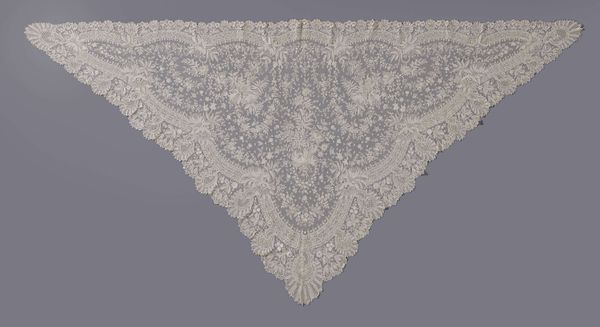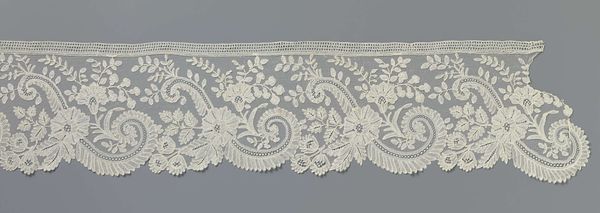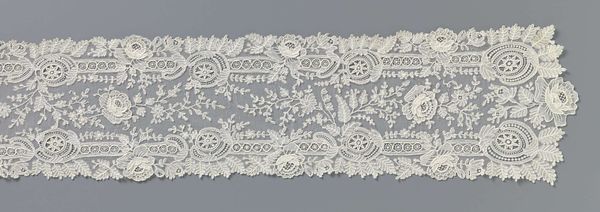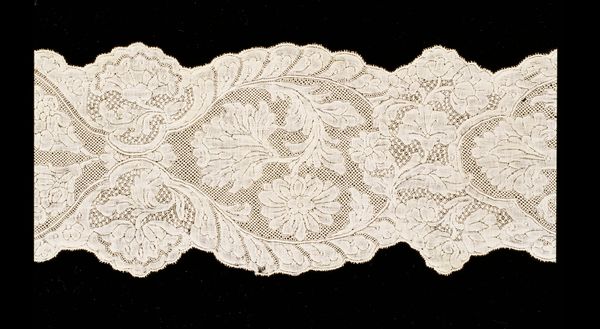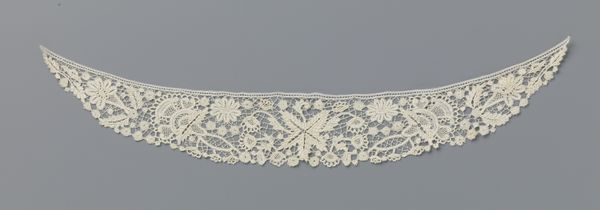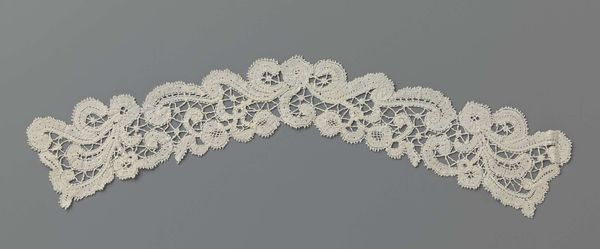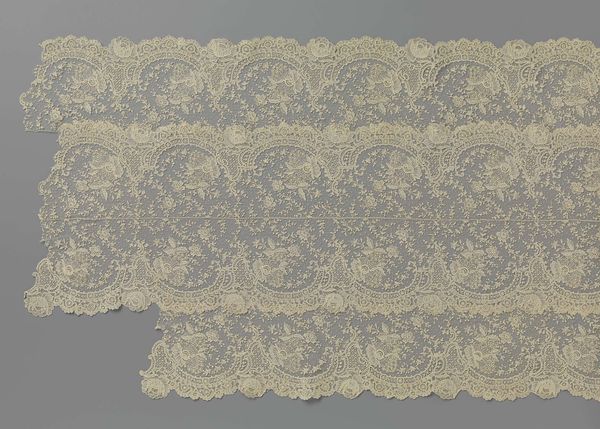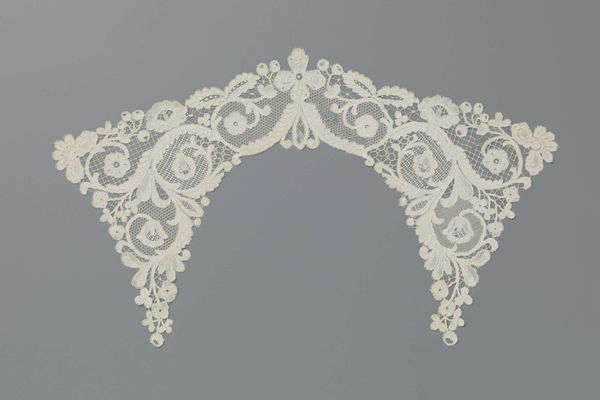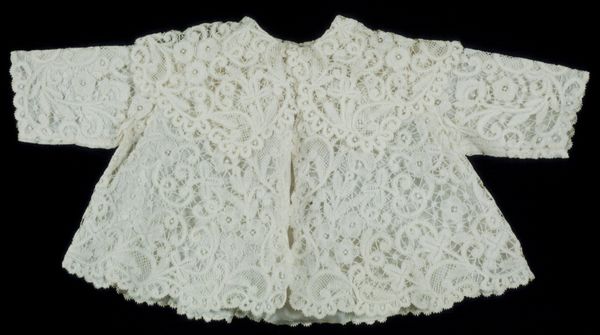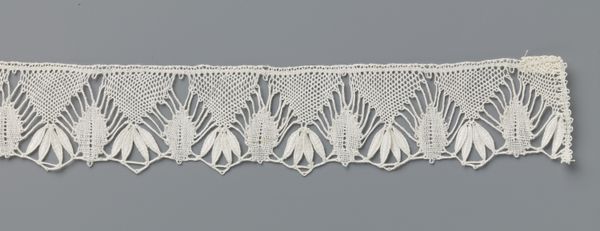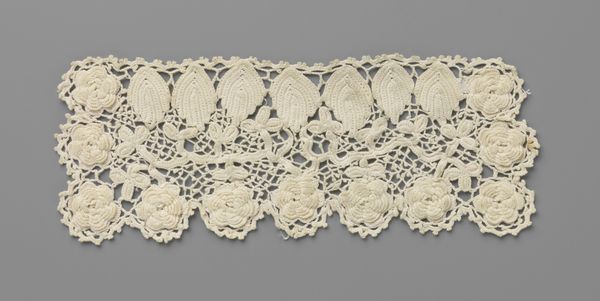
textile
#
textile
#
decorative-art
Dimensions: height 45 cm, width 154 cm
Copyright: Rijks Museum: Open Domain
Curator: The artwork before us is called "Fichu van kloskant met tuinhekje," created in 1894. It’s a piece of bobbin lace—a type of textile work that speaks volumes about skill and labor. Editor: My initial impression is its surprising lightness, like solidified breath. The intricate floral patterns and the suggestive "tuinhekje," or garden gate, give it an ethereal quality. Curator: The “garden gate” motif is crucial. Lace production, historically a cottage industry, particularly for women, becomes entangled with notions of domesticity and virtue. These pieces, far from mere decoration, represent hours of skilled labor and were integral to a woman’s economic contribution within a rigid social structure. Editor: Absolutely. This challenges traditional hierarchies within art, doesn’t it? Here we have "decorative art" infused with romantic ideals, but born of very specific labor conditions. Who produced it, under what circumstances, and how were they compensated? This information highlights a historical power dynamic inherent in what might seem a purely beautiful object. Curator: Precisely. Bobbin lace requires specialized tools and meticulously developed patterns, so looking closer into the materials used and where they were sourced adds another layer. Were the threads locally spun or imported? The exchange of raw materials and finished pieces reflects larger patterns of trade and consumption during this era. Editor: Furthermore, textiles and lace carry strong cultural weight, embodying national identities and artistic revivals of folk-art traditions. Consider how patterns evoke notions of identity, class, gender, and community for both the makers and consumers. What does owning this "garden gate" represent in that moment, culturally, to the people around them? Curator: Viewing "Fichu van kloskant met tuinhekje" simply as lace is dismissive of the skill embedded within and its deep connection to the societal framework that underpinned its creation. Appreciating it demands an acknowledgment of both artistry and the economic realities of 19th-century life. Editor: Indeed. Approaching this textile with critical awareness transforms it from mere adornment to a tangible connection with labor history, raising relevant discussions of gender and economic equality in that period. It makes one think—who profits from beauty, and at what cost?
Comments
No comments
Be the first to comment and join the conversation on the ultimate creative platform.
